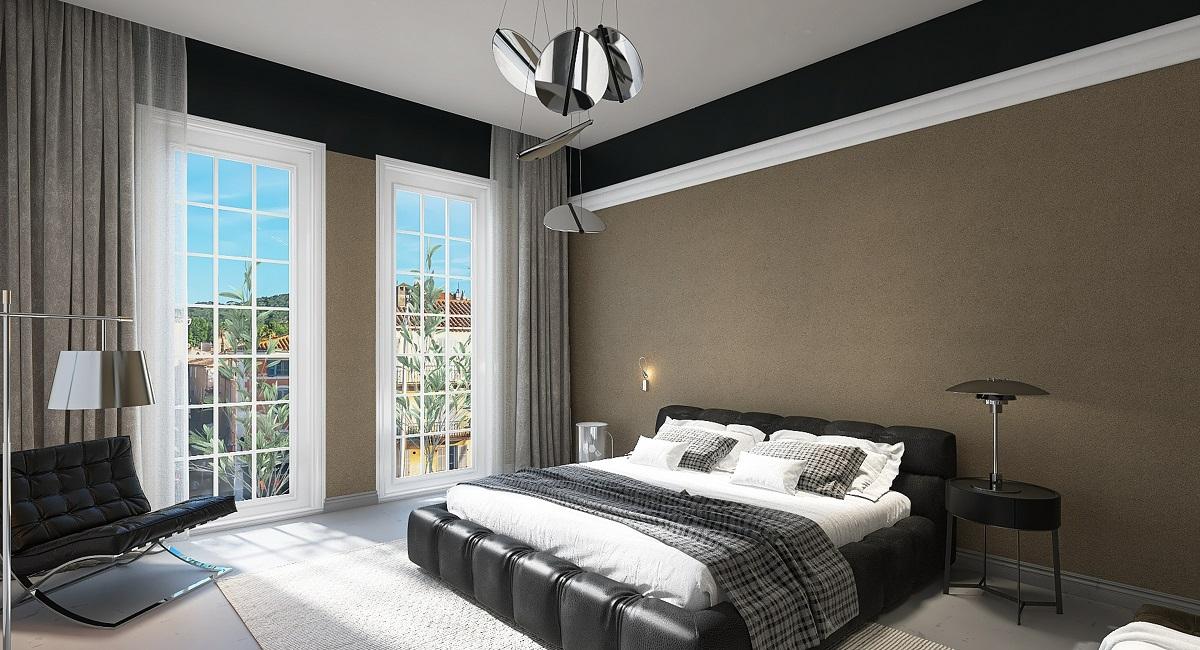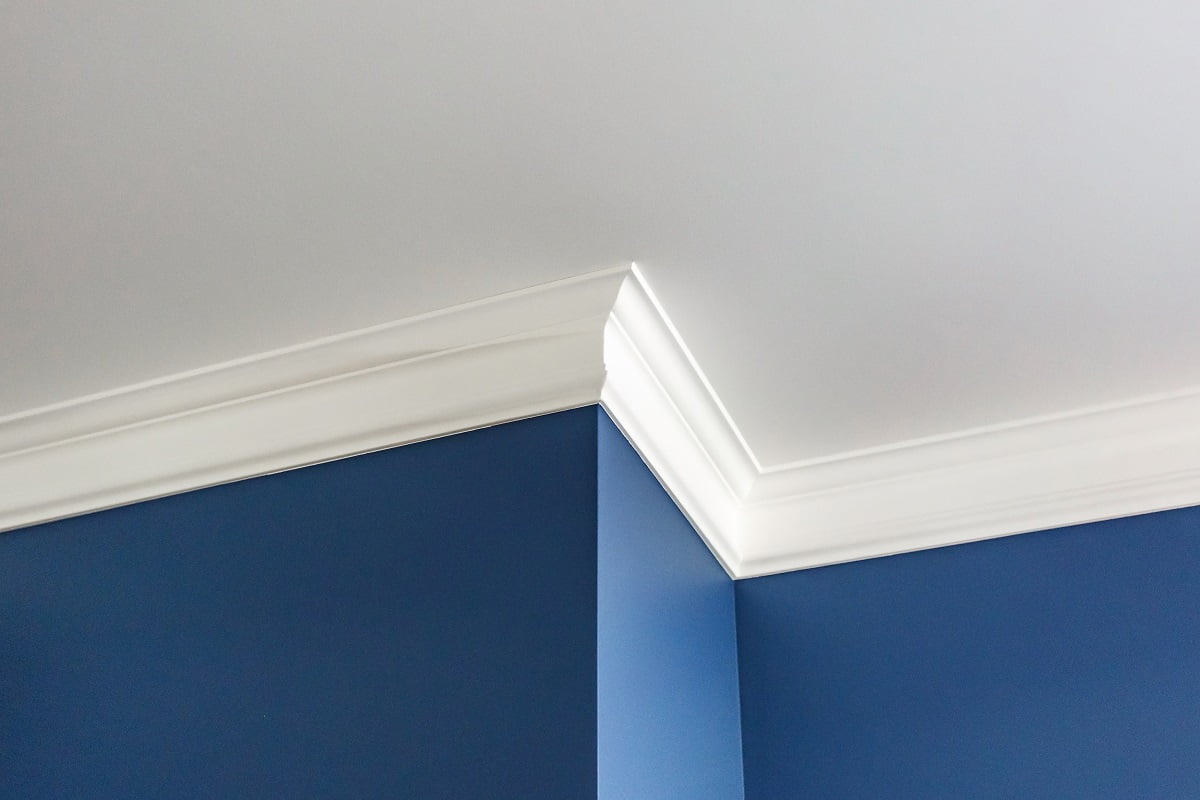If you are confused about whether the best ceiling paint can also be used as wall paint, you need to know more about the two.
![Ceiling Paint Vs Wall Paint [Comparison & Ideas] renovation concept - apartment before and after restoration or r](https://homesthetics.net/wp-content/uploads/2022/07/Ceiling-Paint-Vs-Wall-Paint-1.jpg)
When you are planning to give your home a facelift, it is essential to pick the best paint colors for ceiling and walls. There are many like you who face confusion about these two types of colors and often use them interchangeably without any understanding. Ceiling paints and wall paints are not the same as they are fundamentally different.
To make the most of both these types, you need to understand their properties first. And, that will help you apply them in a perfect manner. Whether you’re confused about how to paint a ceiling with a roller, or wondering if you can mix wall and ceiling paint, we are here to clarify all doubts.
In today's guide, we will see how ceiling paints are different from wall paints and how to make the most of both.
Ceiling Paint Vs. Wall Paint

What Is Ceiling Paint?
When engaging in a paint job for the first time, many people get confused between ceiling paint and wall paint variants. But, they are not the same and need to be handled differently. For choosing the top paint colors for the ceiling, it is essential that you first understand the medium properly.
Ceiling paint colors are relatively a lot thicker (viscous) than wall paint. Most ceiling paints have a latex base, and when applied correctly, they never fail to deliver an even and smooth finish. The paint sheen of ceiling paints is not too high, and they mostly have a flat finish.
One of the major advantages of using ceiling paints is that they are resistant to a number of things. Be it staining, cooking vapors, or smoke, ceiling paints are impervious to all. However, this is not true for wall paints. Unlike wall paints, ceiling paints are formulated in a manner that they can resist mildew as well.
When using ceiling paints, you can consider putting just one coat as they are quite thick and won’t drip, unlike wall paints. And, ceiling paint also tends to dry quicker than typical wall paint.
Most Common Ceiling Paint Finishes
1. Eggshell Finish
For most painters, the eggshell finish is the best choice as it falls between flat paint and high-gloss paint. It is versatile and offers just enough reflectivity to show that the ceiling has been recently repainted, without the high sheen that draws too much attention to the ceiling. Moreover, eggshell finishes can also reduce sound reflection and improve sound quality, making them an excellent choice for larger rooms that require better acoustics.
However, if you prefer a slightly shinier finish than eggshell, you can opt for low-luster or satin finish paints. These paints offer a subtle sheen that is slightly more reflective than eggshell and is ideal for walls and other areas that require more moisture resistance. This finish does a better job of hiding flaws such as minor wall imperfections, roller marks, and skim-coat dust than eggshell or flat paint. However, it is less reflective than semi-gloss paint, and it is easier to touch up due to its more muted finish.
2. Flat Finish
A flat finish is a suitable choice for ceilings that don't require any particular visual appeal, as it provides a dull, smooth appearance while hiding any imperfections like dents or other forms of damage. This texture reflects less light than eggshell finishes, making it ideal for use in spaces like garages or storage areas.
If a flat finish isn't your cup of tea, you might opt for a low-luster finish instead. A low-luster finish shares many of the benefits of a flat finish while offering a slight sheen that makes it more durable and easier to maintain. It also hides flaws better and is more resistant to moisture than a flat finish. However, it also reflects more light than a flat finish and may show roller marks or other minor flaws.
Difference Between Ceiling Paint And Wall Paint
The most important characteristic of ceiling paint is that it is flat, and flat paints are great at hiding blemishes. And, unlike wall paint, ceiling paint reflects less amount of light. As they do not reflect light, ceiling paint can also be used on walls to even out and remove marks and bumps.
And, as we have mentioned before, ceiling paint (latex paint) is more viscous than wall paint and does not drip easily. The advantage to this is that ceiling paint is thick and tends to be more durable than wall paint. It also makes the painter’s job easier, as you can get done with just one coat of color.
On the other hand, if you are working with wall paints, a single coat is nearly impossible. As wall paint is much thinner, you would require to make at least a few coats to get the desired effect.
Are Flat White Paints And Ceiling Paints The Same?
Flat paint and ceiling paint are not exactly the same and are mostly used for different purposes. In many homes, flat ceiling paint is used in place of regular ceiling paint. This does the job well and gives a matte finish, and hides unwanted imperfections.
On the market, you will even find wall paint with a flat white finish. But, these paints are mostly not marketed as ceiling paint because of a number of reasons. Most importantly, wall colors, unlike ceiling colors, come in semi-gloss paint types. Now, this won't really work on ceilings, as the sheen would reflect a lot of light.
And, too much light reflecting from the ceiling can cause problems. If you take our advice, try not to put wall paint in place of ceiling paint, as that will create too much brightness. However, if you still want to do it, choose a flat white wall paint that does not have too much sheen.
Using Ceiling paint On Walls
From our experience, we can say with conviction that ceiling paint can be best used on a wall as a primer. On the whole, using ceiling paint on walls can make the painting process much smoother and easy to fix noticeable drip spots. This is possible because the ceiling paint is quite thick and tends to dry pretty fast.
However, there is one major problem when you try to use ceiling paint on walls. The best paint colors for ceiling are not available in too many shades, and you might not get many options to choose from.
Keeping the problems aside, there might be certain scenarios where ceiling paint can be best used on walls. This is particularly true when you are painting high-traffic areas that tend to get very dirty. Imagine a sports room where you keep your muddy shoes and boots. In such a room, painting the walls with thick ceiling paint can be the best bet as cleaning the walls would become easier.
When To Use Ceiling Paint On Walls?
Interior designers often make use of ceiling paints to create a pleasant aesthetic by covering an entire room with the same color. Apart from that, there are a few other ways in which you can use ceiling paint on walls.
Sometimes, people use ceiling paint on walls not just because it looks pretty but because it is convenient. When moving to a new house or renovating an existing one, you can completely avoid taping the closets when painting them if you are using ceiling paint.
Other than that, some people swear by ceiling paint when it comes to painting stairways. This is because stairways have to handle heavy traffic, and ceiling paint can easily hide scuff marks, dirt, and imperfections. Apart from painting ceilings, you can use these paints on both exterior and interior walls.
Unlike regular wall paint, ceiling paint can handle stains well, even if someone leaves a mark on the wall. If someone does it, you simply have to get a bucket of ceiling paint from the local paint shop and put a coat over the marks.
Using Wall Paint On Ceilings
By now, you must have understood that the consistency of wall paint is low. That said, it is not like these paints cannot be used on ceilings. It's just that you will be required to take a few precautions.
Because wall paints are thinner, there's a chance that they will splatter more, and you would need to do the extra work of cleaning. If you are using wall paint on the ceiling, be prepared to handle the drips.
Having said that, wall paints can work great for textured effects on a popcorn ceiling. When using wall paint on the ceiling, we recommend that you use a roller and not a paint sprayer. In case you are not aware of how to paint a ceiling with a roller, you will find hundreds of blogs on the internet that can be of help.
Not all wall paints are runny, to be honest! With proper research, you will be able to find wall paints that are thick, durable, and can be cleaned easily. These variants can be put on the ceilings to create great textures.
Can You Mix Wall Paint And Ceiling Paint?
Mixing ceiling and wall interior paints can be quite a task unless you have proper experience in working with paints. When mixing, keep in mind that the two paints should be of the same type. In case you end up mixing oil-based paint with latex-based ceiling paint, the results can be disastrous.
If you mindlessly mix ceiling paint and wall paint, the chances are that the top coat won't dry properly. For example, mixing satin wall paint with thicker ceiling paint is definitely not a good idea.
Your main idea should be to get the best of both worlds. And, for that, we suggest combining the two paints as an undercoat and topcoat. You can put the ceiling paint as an undercoat as it would make for a great layer, given that it is highly viscous and durable. And to highlight the beauty of the walls, you can then proceed to put a wall paint of your choice as the topcoat.
Pro Tip: Do not mix a lot of paint in one go. If things do not work, you will end up wasting a lot of colors. Instead, try mixing small quantities and experiment by putting them as small patches on your wall. This will help you understand how the mixture is behaving and how you can put it to best use.

Ceiling Paint Vs Wall Paint Frequently Asked Questions?
How To Paint My Ceiling Perfectly?
To get the best results, you need to have all the right tools handy. Before you begin to paint the ceiling, make sure that you put a primer on it first. We suggest that you keep brushes handy to cover intricate areas.
However, when painting ceilings, try to use a paint roller instead of a paint sprayer.
How Should One Prevent Stains On Walls?
In case you are painting a wall that receives high traffic, it is best that you put high-sheen paint on it. High-sheen colors, especially oil-based paint, do not catch dirt easily and are quite simple to clean.
On the other hand, low-sheen paints are not that scrubbable, and it can get pretty difficult to remove handprints and other marks from them.

Ceiling Paint Vs Wall Paint Final Words
With that, we have reached the end of this informative guide!
Whether you are looking for the best ceiling paint or wall paint, you can only find the perfect match through hit and trial. As a rule of thumb, always try to prefer thicker paints for ceilings as that will prevent the problem of dripping. Unless you are a professional painter, skip out on the sprayer and use a roller and a brush instead.
You can choose an elegant eggshell finish for your bedroom, a semi-to high-gloss for the kitchen and bathroom walls and ceiling. And, you can opt for a matte finish for the living space. For more interesting reads, do not forget to keep an eye out on this space.
Until next time, take care!
